What to See in Nuremberg.
Nuremberg is a city that I’m very familiar with – my mother was raised in nearby Erlangen. We’ve passed through Nuremberg many times over the years.
This post covers the things you have to see in Nuremberg – along with a few tips that most visitors wouldn’t know.
Accommodation: We stayed at the Hotel Central on this last trip which is an excellent value option.
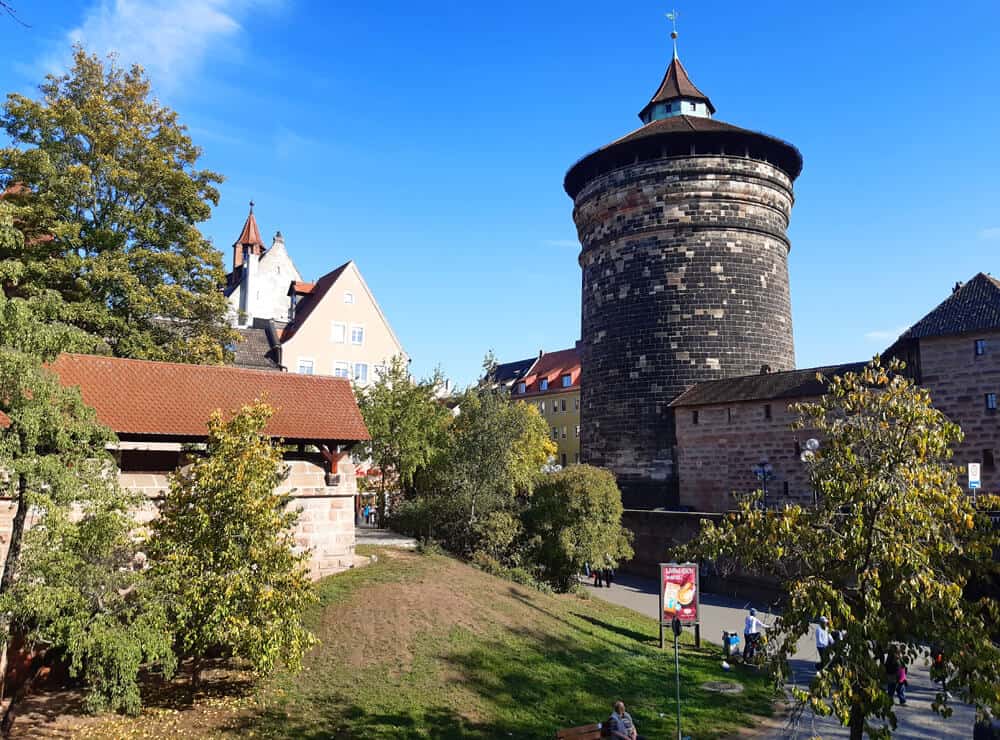
A little history
- Nuremberg grew due to its strategic position along trade routes from Italy to Northern Europe.
- The city is often referred to as the “unofficial capital” of the Holy Roman Empire (962 – 1806 AD), an empire centered on Germany but that stretched into Italy. This unofficial title was because the decision-making body of the empire (Reichstag) would meet at Nuremberg castle.
- By the 1200’s Nuremberg (along with Augsburg) were major trading centers.
- Jews were prosecuted and massacred several times in the 13th and 14th century, often in concert with Black Death epidemics (Jews were blamed for the outbreaks).
- By the mid 1400’s Nuremberg was one of the most important cities of Europe and the center of the German Renaissance.
- In the 1500’s Nuremberg suffered a decline when other trade routes developed.
- In the early 1600’s the 30 year war started (one of the most destructive conflicts in human history with over 8 million dead).
- The city declined after the war and it was only in the 19th century that the city recovered as an important industrial center.
- Nuremberg was key to the Nazis who held rallies and conventions here. The Nuremberg Laws (in 1935) striped German citizenship for all Jews and other non-Aryans. With its strong industrial facilities, the city also became an important site for military production during WWII.
- Nuremberg was heavily bombed during the war and on January 2 1945 90% of the city center was destroyed.
- Nuremberg was chosen for the trials after the war (the Nuremberg Trials) precisely because of it’s symbolic value to the Nazis.
- Today Nuremberg is the 2nd largest city in Bavaria (after Munich) with a population just over 500,000. It is the largest city and unofficial capital of Franconia. It is also a transport center with excellent links to other places in Germany as well as the rest of Europe. It is a major rail hub for Deutsche Bahn and its airport is within easy reach of the city center.
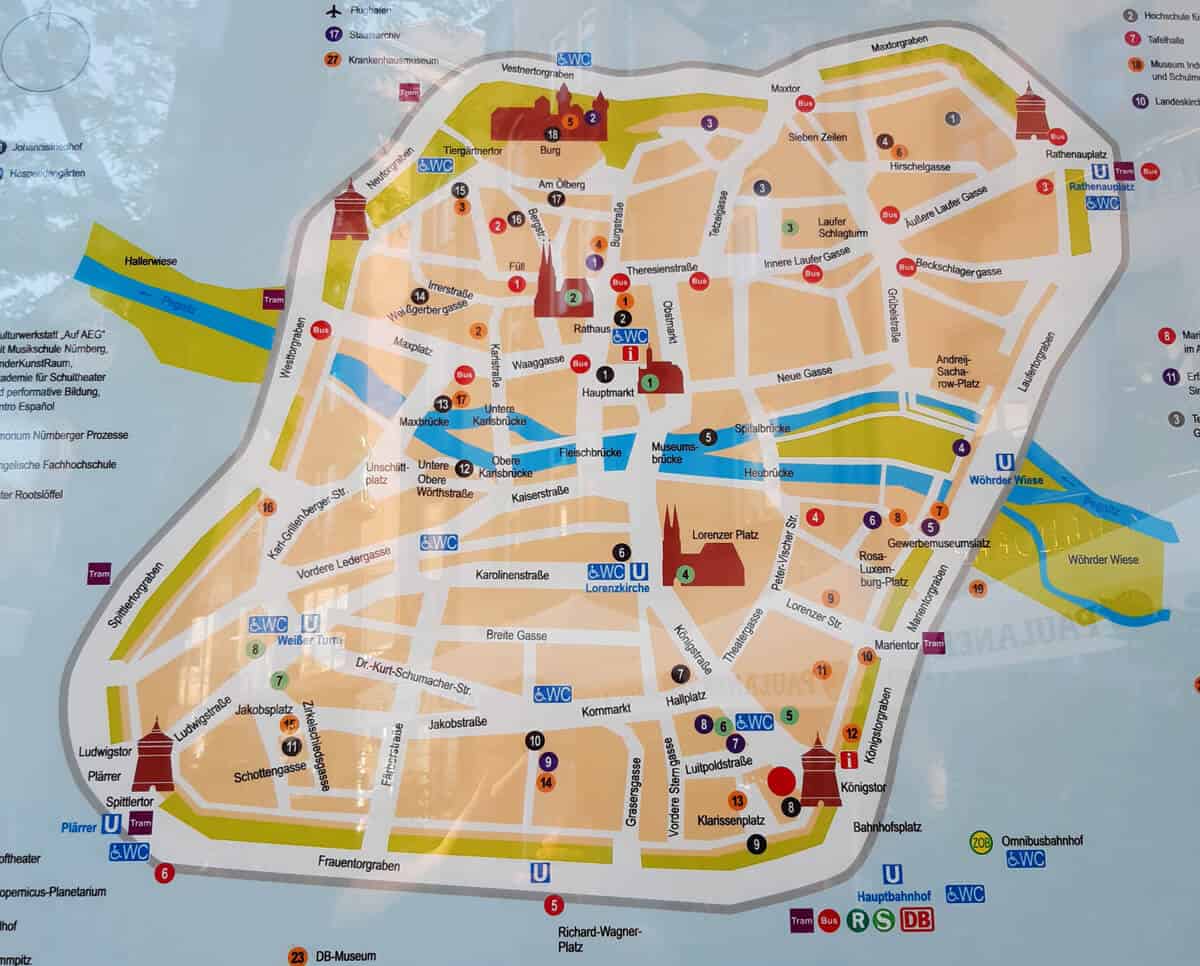
What to See in Nuremberg / Tips
1. Concentrate on the Northwest part of the old town
The Old Town is split by the Pegnitz river. If you’re coming in by train, you’ll be getting out south of the river, at the Southeastern part of town. There are some highlights there but if you’re limited on time the best tourist highlights of Nuremberg are on the Northwestern part of the old town. There you’ll find Nuremberg’s Imperial Castle, the Albrecht Durer house (which sits on a pretty square right below the castle), St. Sebaldus (a very impressive protestant church), and the Hauptmarkt (main market square) with its beautiful fountain (Schöner Brunnen) and the Frauenkirche (the Church of Our Lady).
Some photos of the highlights in this part of town.

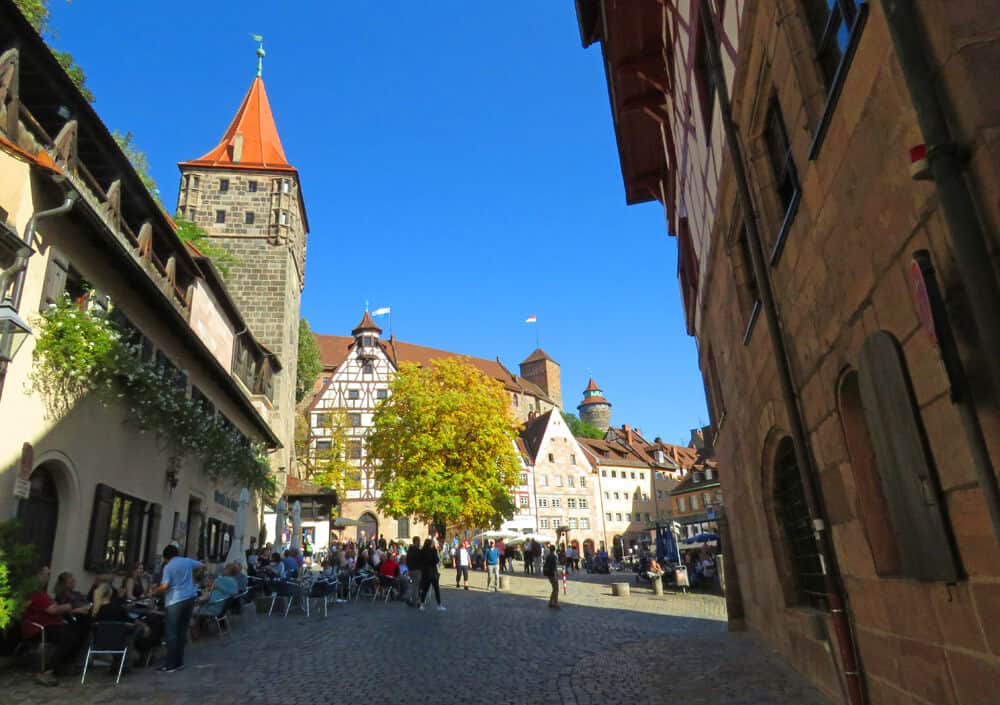
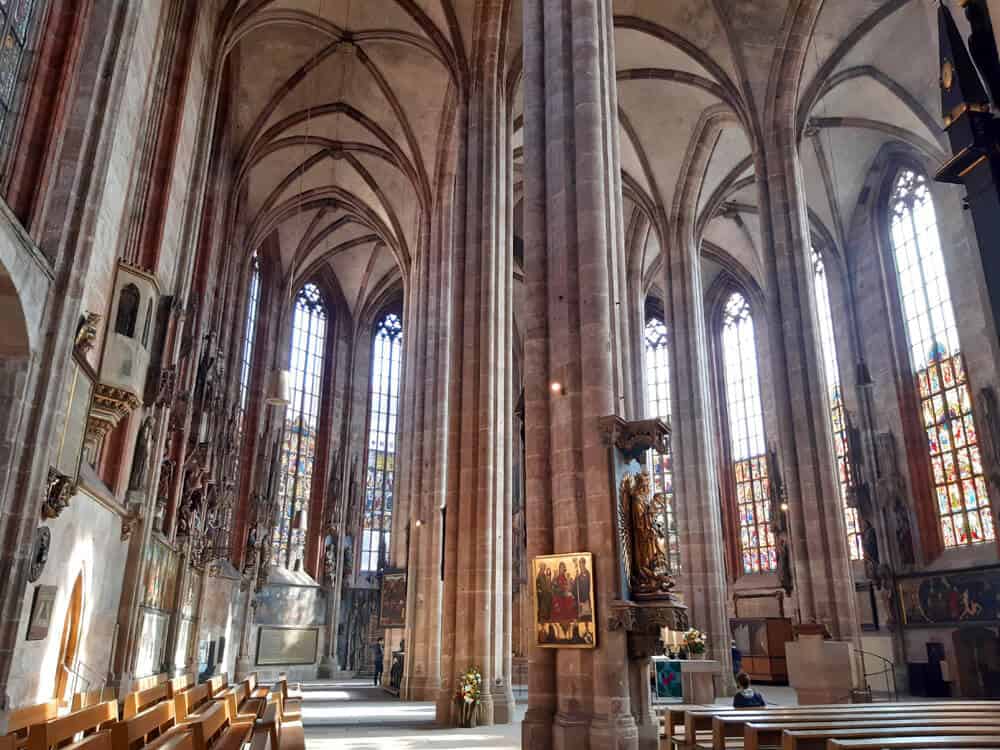

The historic center of Nuremberg isn’t that big and getting to the Northwest part of town where the castle is doesn’t take long. According to Google Maps you can walk from the train station (Hauptbahnhof) to the Imperial Castle in 20 minutes. But if you don’t want to do that, you can take the metro to Rathenauplatz and then walk west for about 15 minutes (that’s what we did) or take the metro to Friedrich-Ebert-Platz and walk south from there (about 12 minutes).

2. Historic Walls, Towers and underground tunnels
A really interesting aspect of Nuremberg are the still-intact walls and very impressive towers. You’ll notice that on the four corners of the city (see my map at the top) there are large towers. These, along with the walls, were built in the 15th century and were one of Europe’s most impressive defensive fortifications. Up near the castle, right across from the Albrecht Durer house, is a very large tunnel leading out through the wall. Walking through it will give you a scope of just how massive the fortifications are.
Best places to see the fortifications: the Northwest corner of the city by the Albrecht Durer house, the Southeast corner of the city across from the main train station, the Southwest corner of the city by the Spittlertorturm.
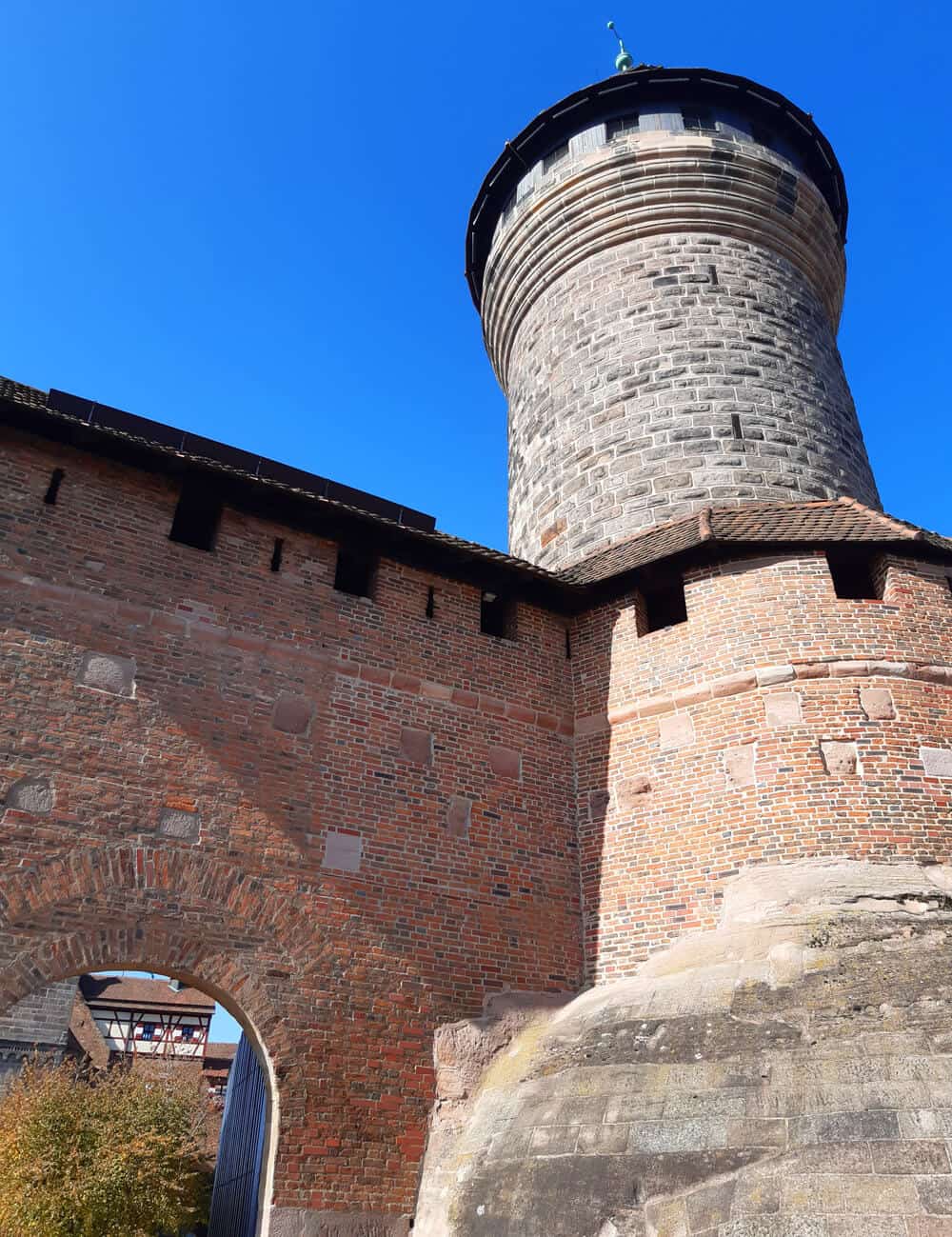
Note that Nuremberg also has about 6 acres of underground tunnels and cellars that in ancient times were used to store beer (and which provided protection in World War II).
3. St. Lawrence church (and the river)
Across from the Northwest part of town which I mentioned above (and where you’ll find Nuremberg’s most outstanding highlights), is the St. Lawrence church (Lorenzkirche). It is a 14th century Gothic church and is the largest church in the city. It is located close to the small river (the Pegnitz river) that divides the old town.
4. Best Views
The Imperial Castle has good views looking across the city from the north. But for a city with as many towers as Nuremberg it’s surprising that none are open to be climbed for views.
But here’s a recommendation that you won’t find anywhere else: one block north of St. Lawrence church is a street called Adlerstrasse. There’s a car park there, right across the street from the Karstadt galerie (called the Adlerparkhaus Nurnberg if you’re looking it up on Google Maps). Go up to the top floor of the car park – there you’ll get views looking across the river towards the castle. I think the views here are more interesting than those at the castle.
5. Have a Nuremberg Bratwurst
Nuremberg is known for its special sausage: the Nuremberg Bratwurst. Nuremberg’s sausage is famous for being smaller (finger sized) and for it taste. It is probably Germany’s best Bratwurst (my German mother swears by it). It is very high quality as it gets special protected status by the government which requires it to be cooked according to the original recipe.
Our favorite place to eat it is Bratwursthäusle bei St. Sebald (right next to St. Sebald church). You can get a plate with 6 to 12 sausages, usually with sauerkraut on the side. It’s a place we always go to when in Nuremberg.
More
There’s more to see in Nuremberg, especially if you enjoy museums of which they are quite a few (including the transport museum, the Nazi Documentation center, and the Neues Museum if you like contemporary art). There’s also an excellent zoo.
Accommodation in Nuremberg
A few very good mid-range options right in the old town: Hotel Central, Burghotel Nürnberg, Hotel Elch Boutique. All are quaint, well priced, with excellent location. If you want to splurge the Sheraton Carlton Nüernberg is right next to the train station and by the entrance to the old town.
Visit a few nearby Franconian towns
Bamberg which I wrote about here: …why Bamberg should be your base in Franconia
Würzburg which I wrote about here: Würzburg the city of churches
Coburg which I wrote about here: Visiting the really pretty town of Coburg
Flying in
Nuremberg Airport (airport code: NUE) is just 5km from the city center and you can get there on subway line U2.
Have you been to Nuremberg?
Related: Bamberg, Würzburg or Nuremberg?
Related: Würzburg, the city of churches
Related: 5 great places to visit in Germany (that few people know about)
Ps. If you find our blog helpful, please consider using our links to book your flights, hotels, tours, and car rentals. Have a look at our Travel Resources page.

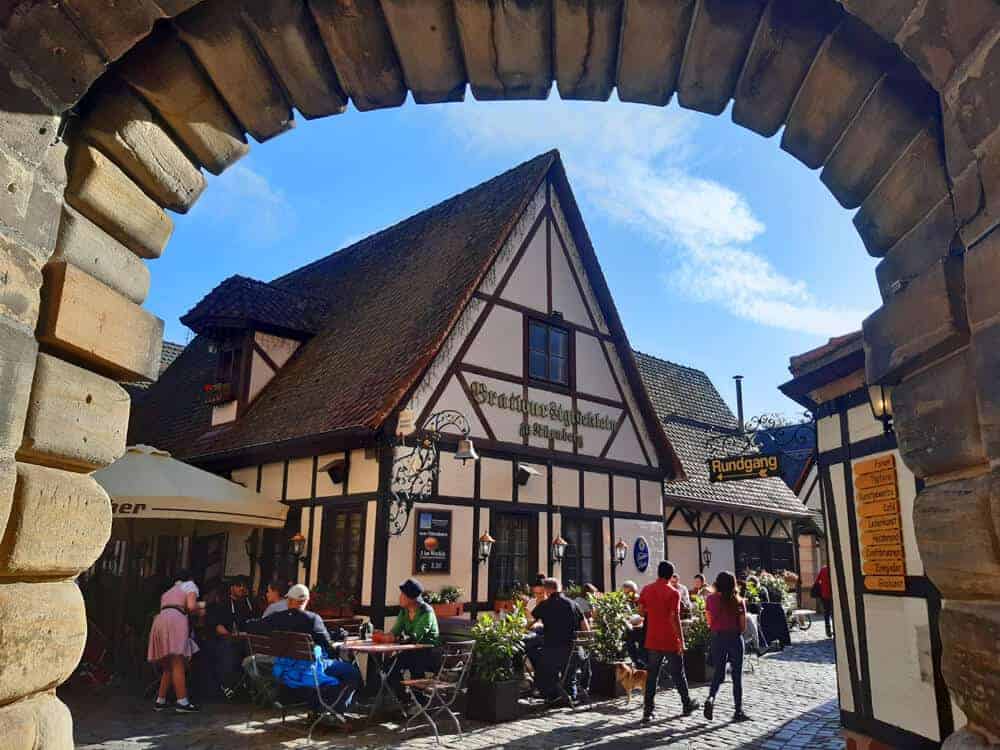
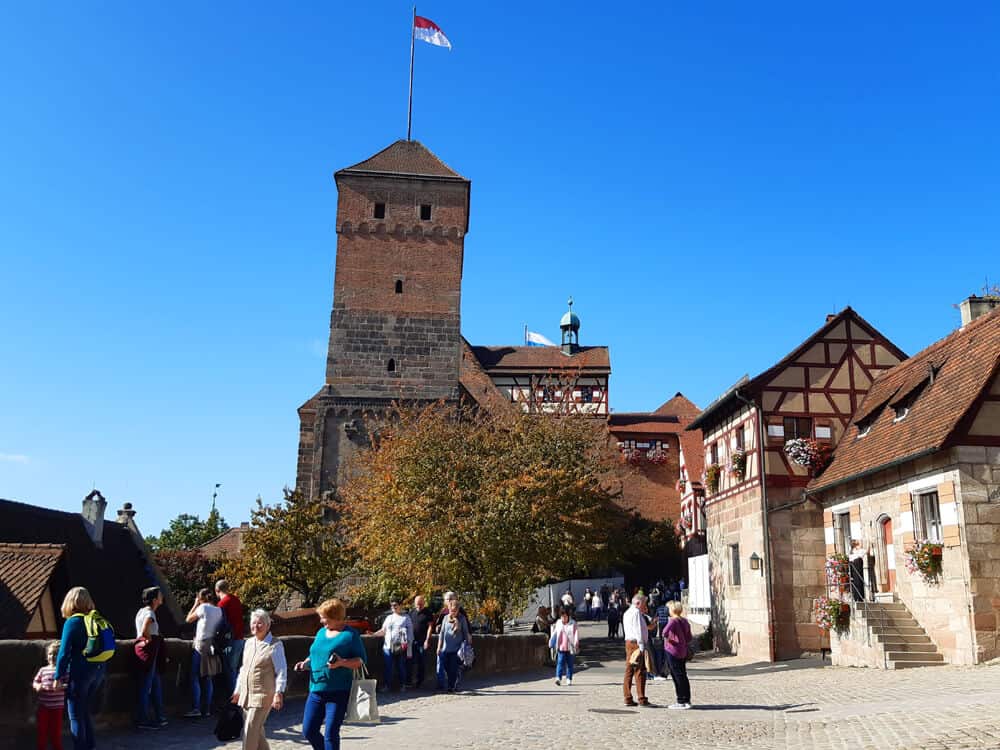
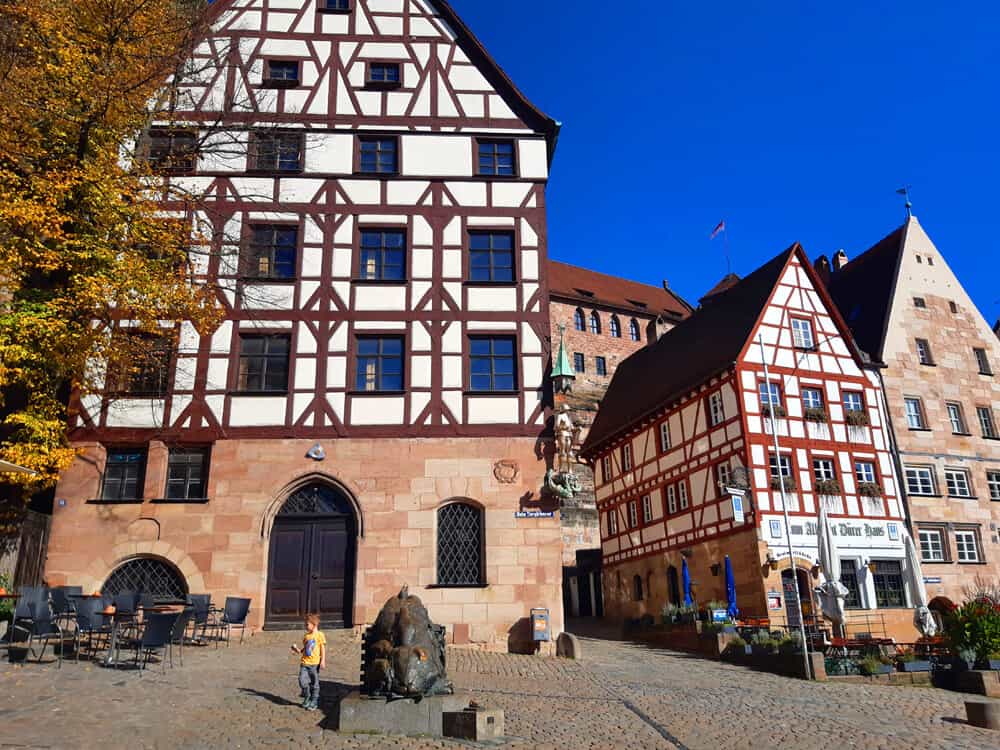
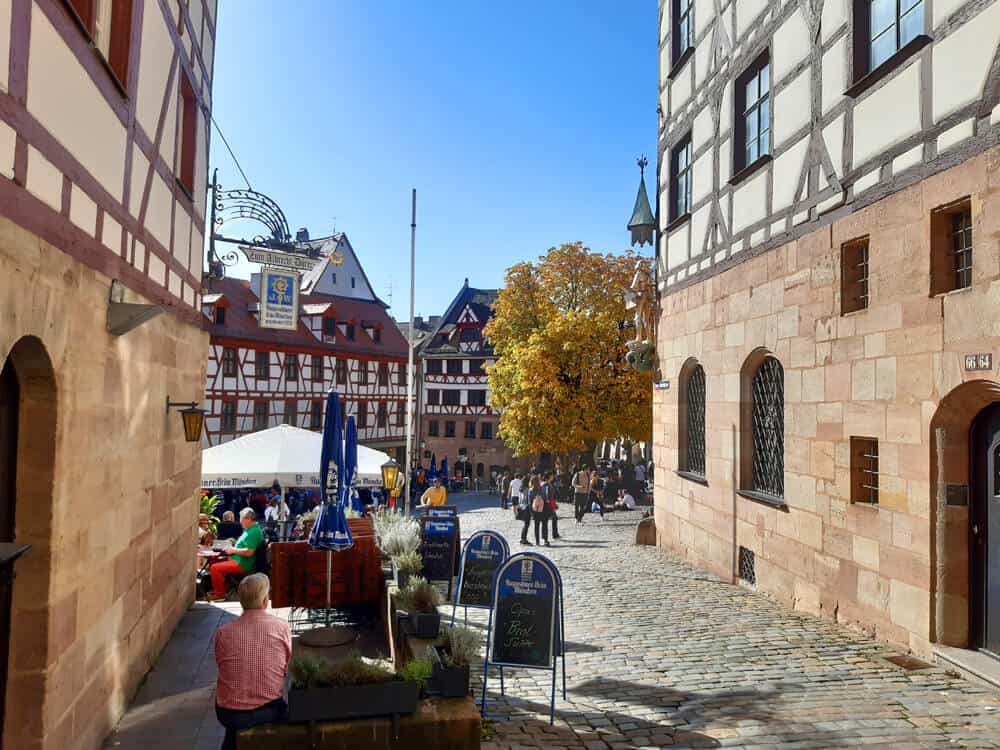

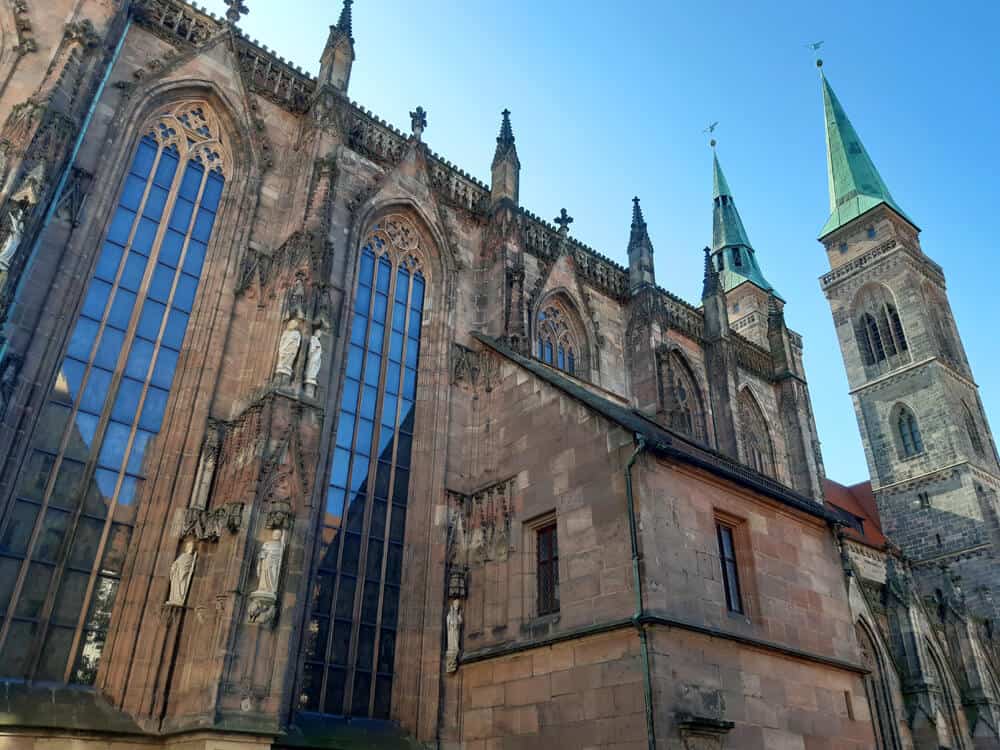
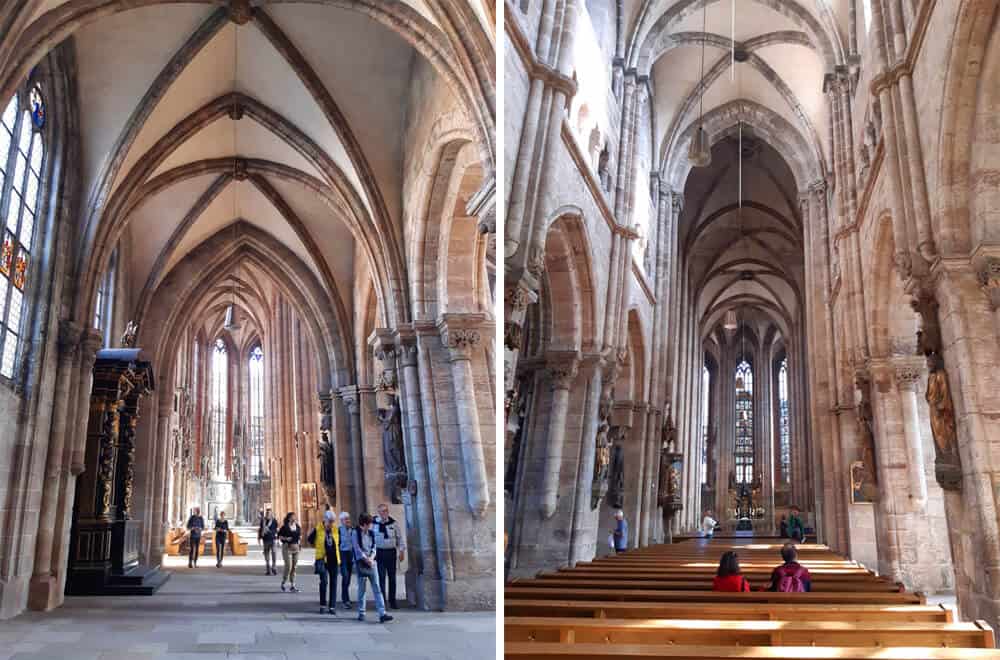


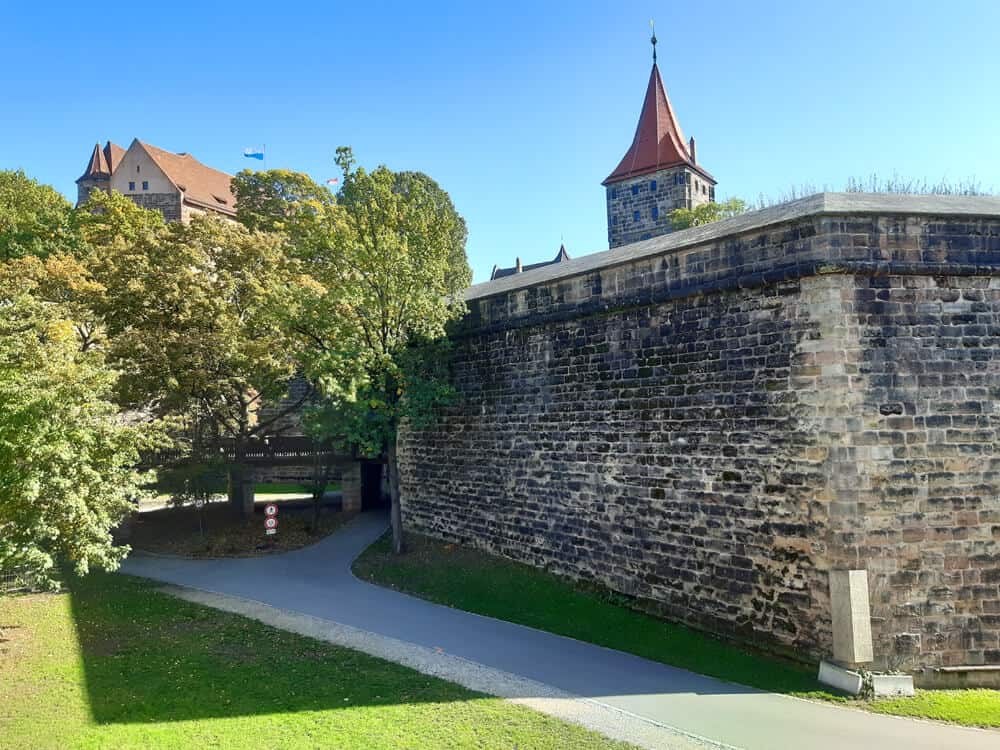
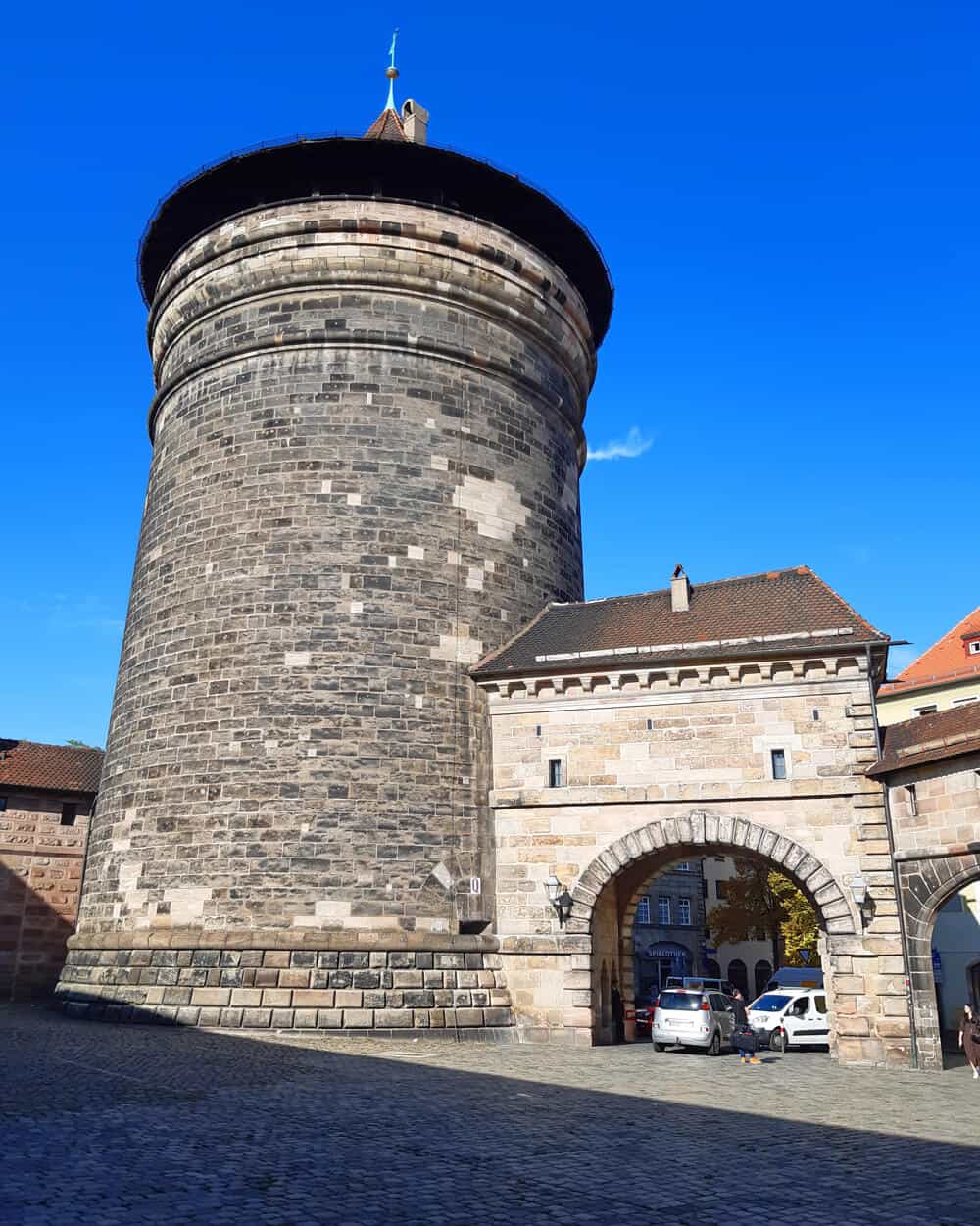

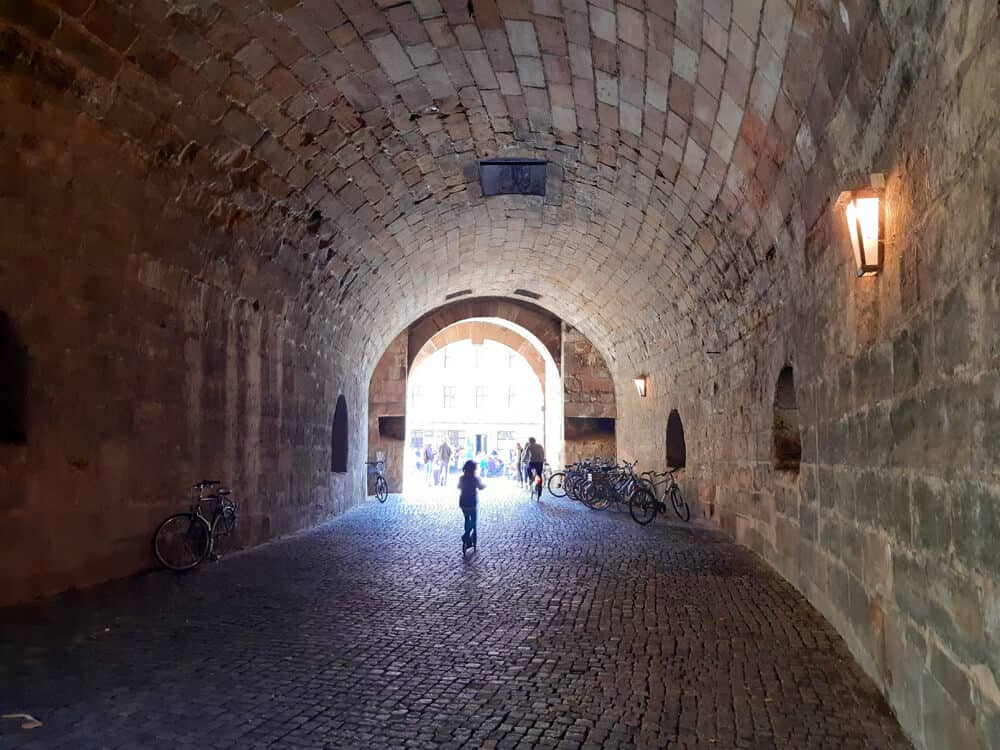
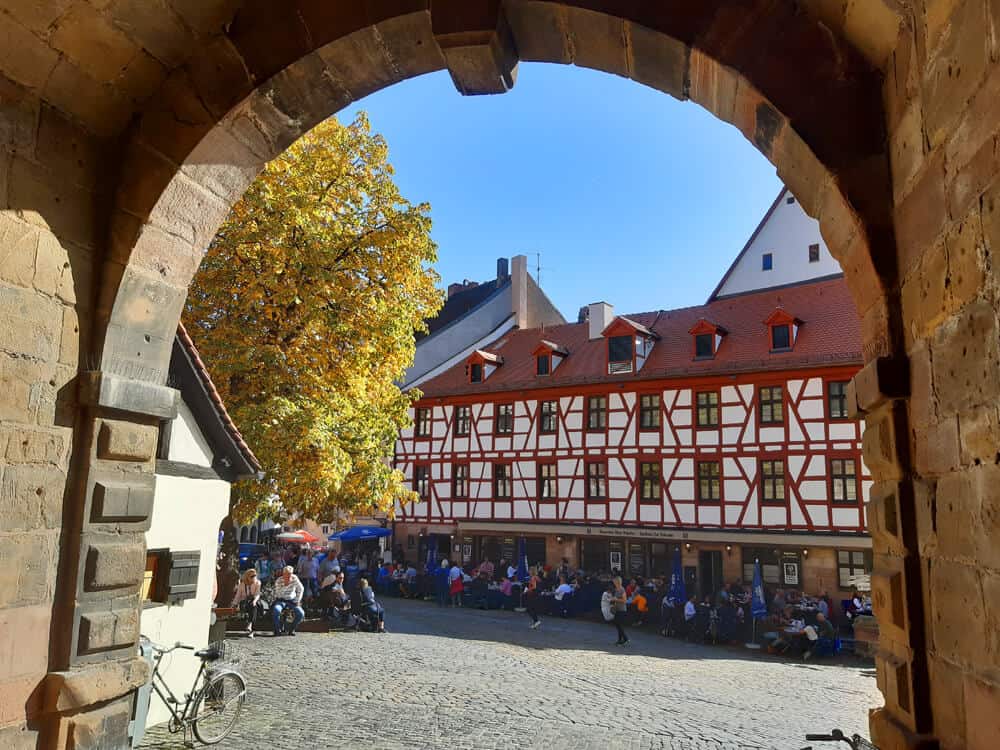
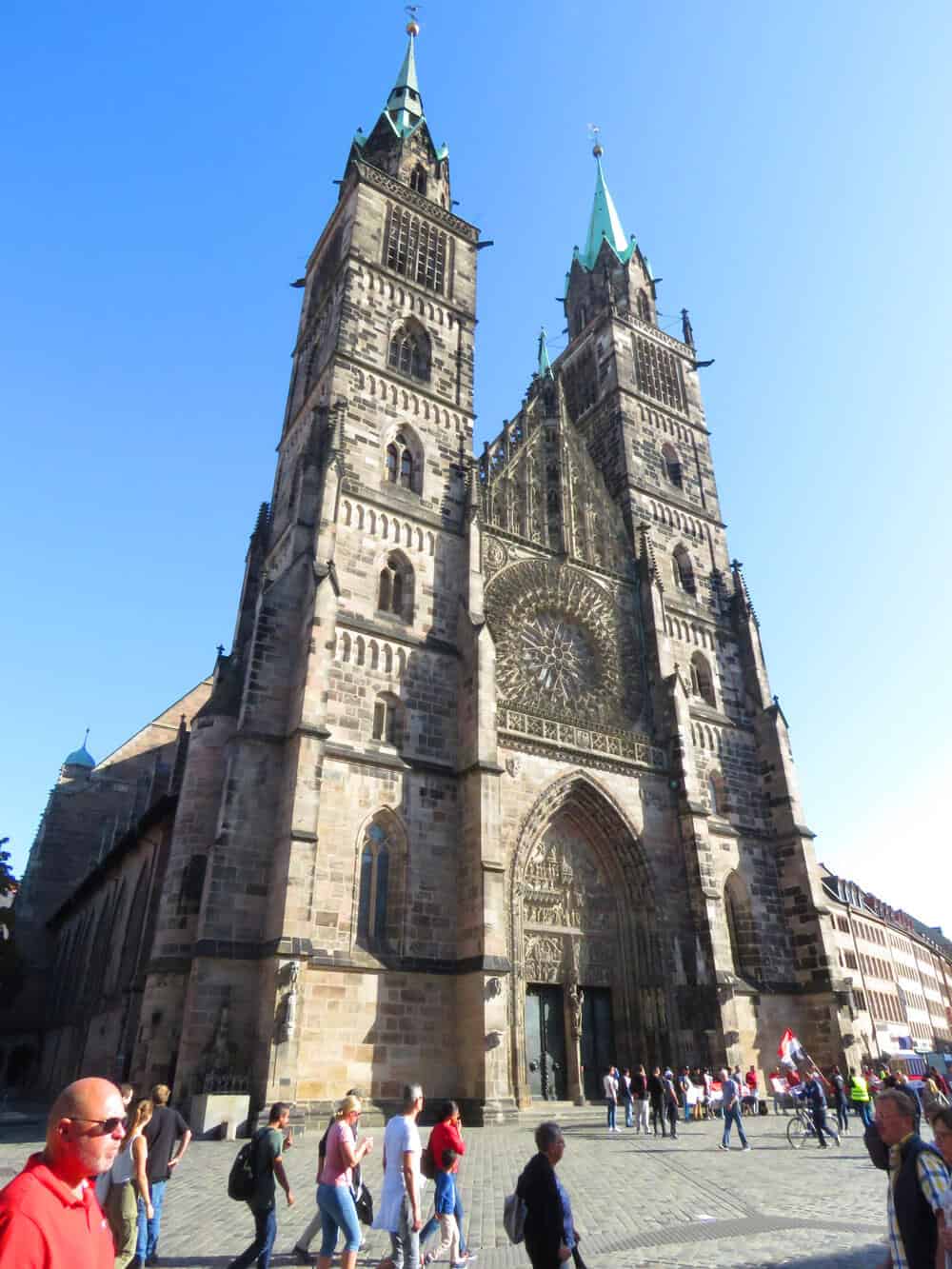
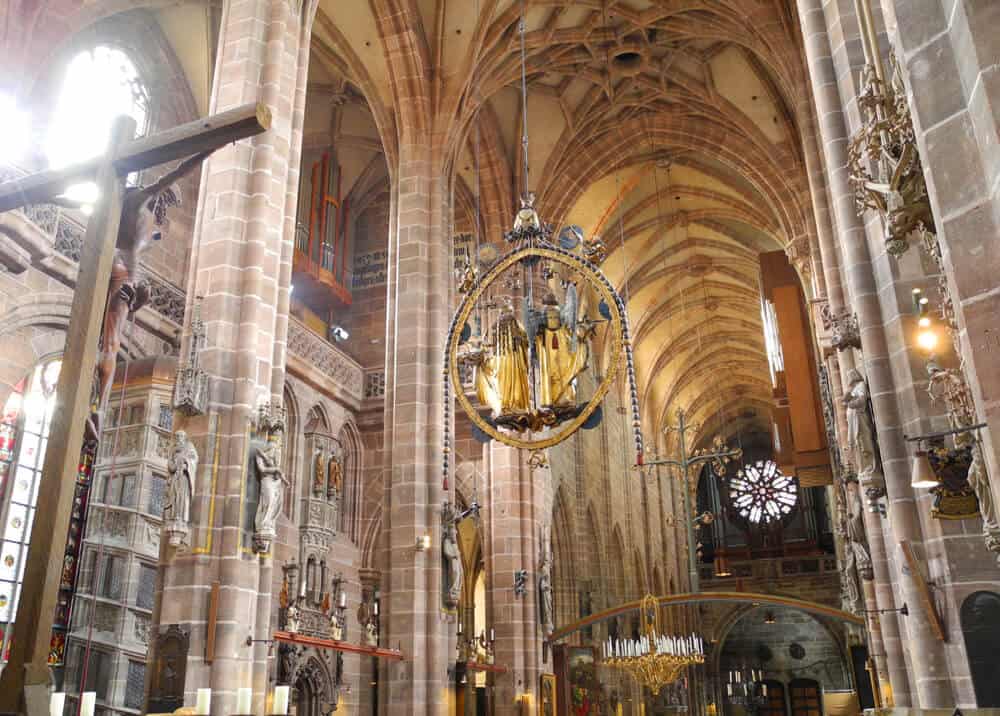
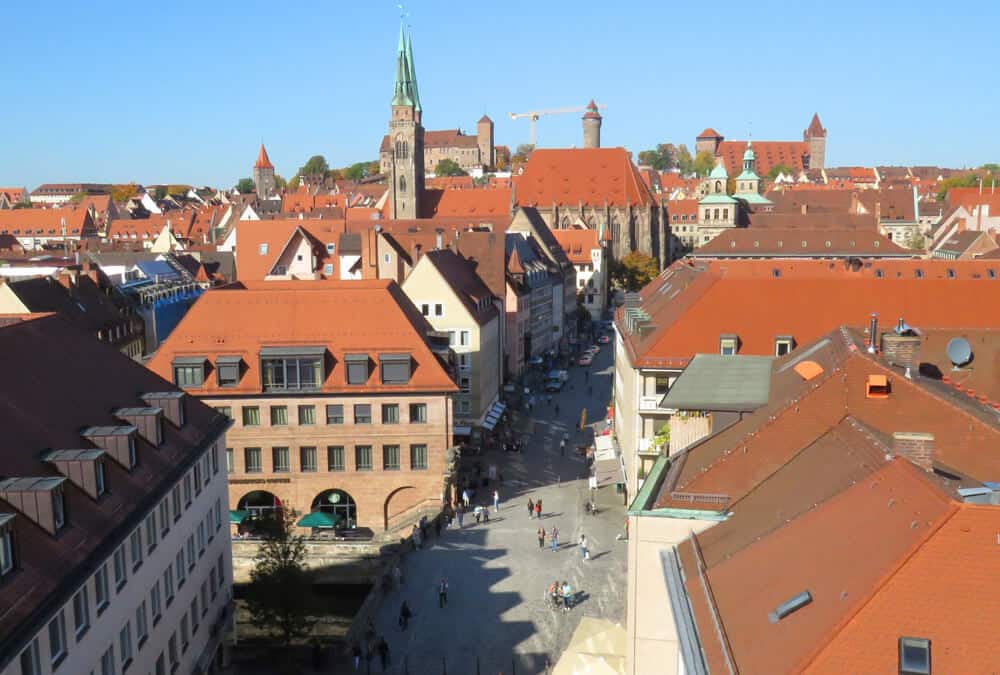
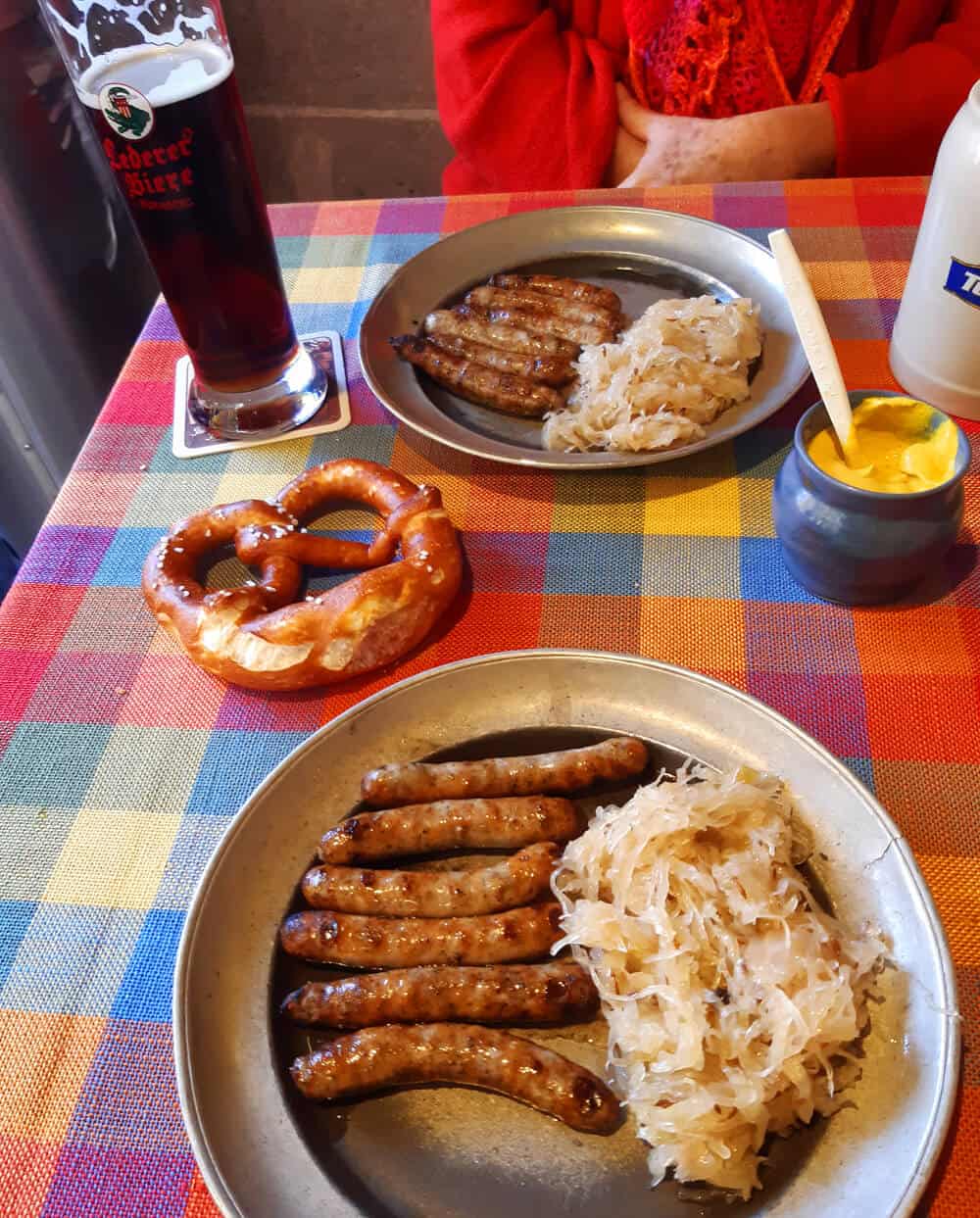


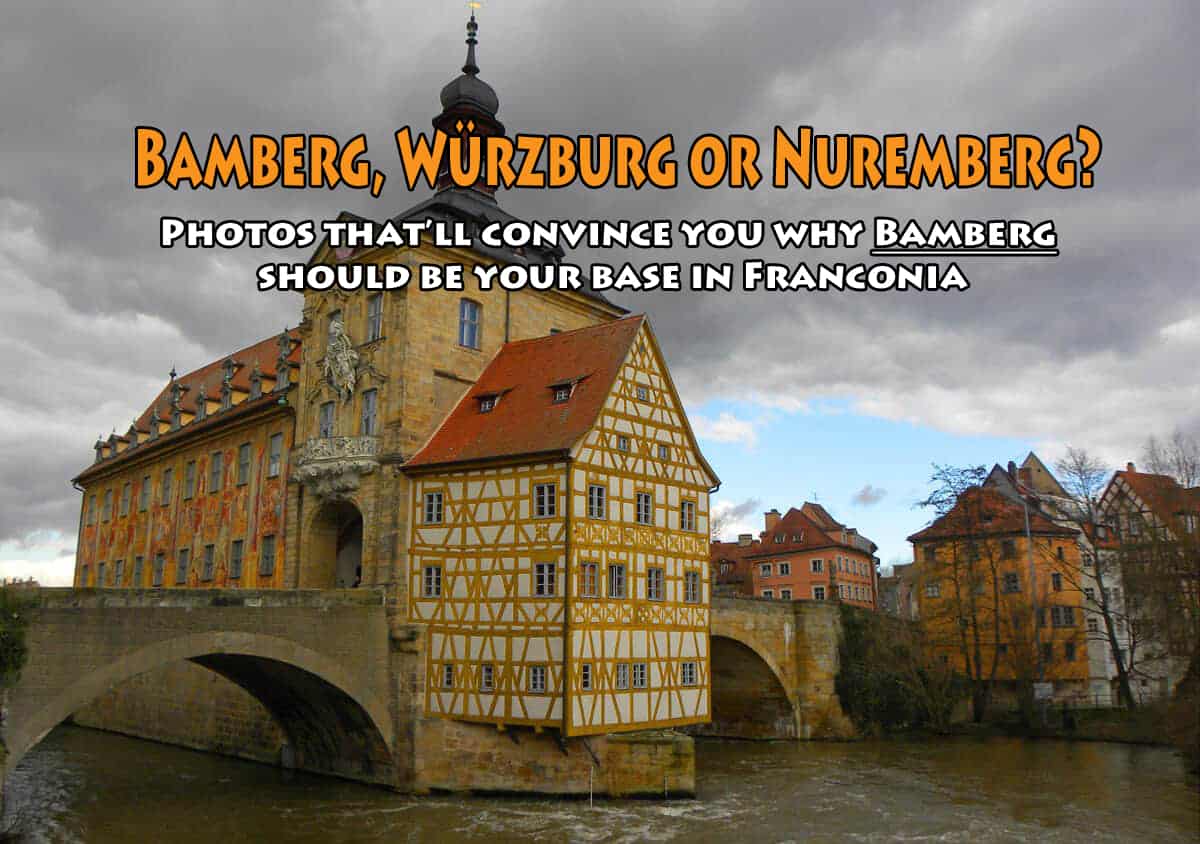
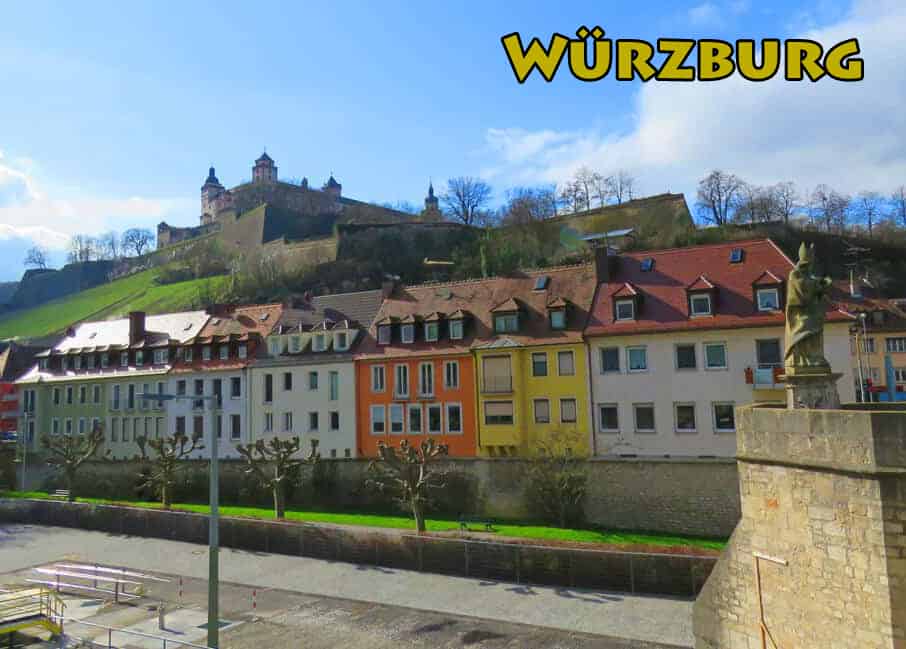
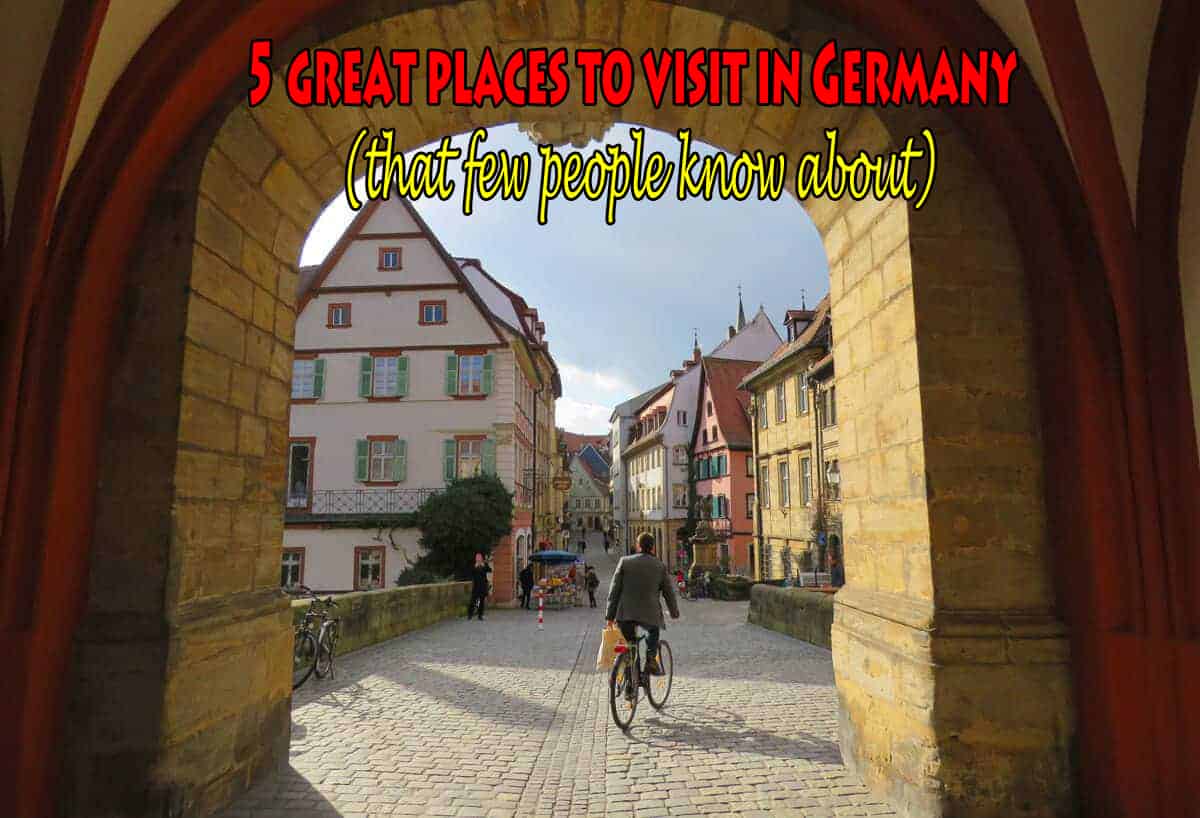
This is exactly what I need! I’m going to be in Nuremberg for just a few hours, as I’ll visit on my way to Munich from Wurzburg. So I’ll make sure to prioritize the north west area of the city
Anyone with even a passing interest in WW II history should visit the Documentation Center. We spent hours there and easily could have spent the whole day. It was chilling to see actual video of Hermann Göring, Rudolf Hess and other criminals standing up in the courtroom to defiantly say “Nicht schuldig” (“Not guilty”). You could tell they really didn’t believe they were guilty of anything and seemed annoyed at having to say so. There are survivor testimonials and so much other historical information information there. You can also go into the actual courtroom.
On a lighter note, the Christmas market there is famous and worth a visit if you can tolerate crowds. Or go in June for the Franconian Beer Festival, which takes place at the castle.
I wouldn’t say Nürnberg is my favorite German city, but we’ve been a few times and always enjoyed it.
I definitely can relate to the dark and gloomy impression of Nuremberg, but then – I visited mostly when it was raining. However, I really like the museums. They did a fantastic job with the museum at the Nazi party rally grounds and the Albrecht Dürer house gives a very interesting introduction into his life and his paintings. I also particularly like the museum of Contemporary Art, which always has fabulous special exhibitions and the permanent collection is nice too. And they have nice pubs with tasty Frankonian beer.
So same as me for the rain? Seems to rain a lot in Nuremberg…
Thanks for the museum tips. The beer always great in Franconia…also love the wine!